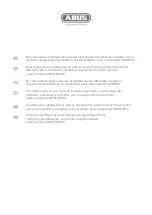
5
STAP Overview
5 STAP Overview
5.1 Description
The STAP has been designed in a small and light form factor for applications where
space, weight and power availability are important constraints. For example, the STAP
has been deployed on-board Unmanned Aerial Vehicles (UAVs) over the Arctic and on
tethered balloons. The STAP measures the change in light attenuation once per second
through a filter upon which the particle sample is collected. A clean reference filter is
employed on which no particles are deposited and through which the light attenuation
is also measured. From the change in light attenuation the aerosol light absorption co-
efficient may be derived. If the mass absorption cross-section (MAC) of the aerosol is
known, then dividing the absorption coefficient by the MAC allows the mass concentra-
tion of absorbing aerosol to be determined.
The STAP sample flow rate is measured by a precision laminar flow element on the in-
let and controlled in real-time by modulating the speed of the integrated vacuum pump.
The STAP has a single sample filter and a single reference filter through which the sam-
ple flow passes downstream of the sample filter. For applications requiring multiple
sample channels, Brechtel offers the Model 2901 TAP with 8 sample filter spots and 2
reference filter spots.
The STAP uses 10-mm diameter, glass-fiber filters (Brechtel STAP-FIL100). These fil-
ters are made of two fibrous layers, borosilicate glass fibers overlaying a cellulose fiber
backing material (for strength and stability). The cellulose fiber layer is thought to take
up water under conditions of high humidity, which is one reason the STAP sample flow
should be dried before entering the unit to decrease the risk of condensation within the
instrument. Contact Brechtel if you require a sample flow drying solution.
The STAP does not require an external computer for data logging and instrument con-
trol. The internal software in the STAP provides the functionality for measuring signals
(light intensity reaching the detectors, flow rate, sample temperature and pressure) and
controlling the hardware (light source, vacuum pump, saving data to SD card).
When combined with the STAP Graphical User Interface UAV Reader Software, the STAP
reports the change in light transmission through the filter. The UAV Reader uses the
83-00036-01A
STAP 9406
Page 9 of 46











































